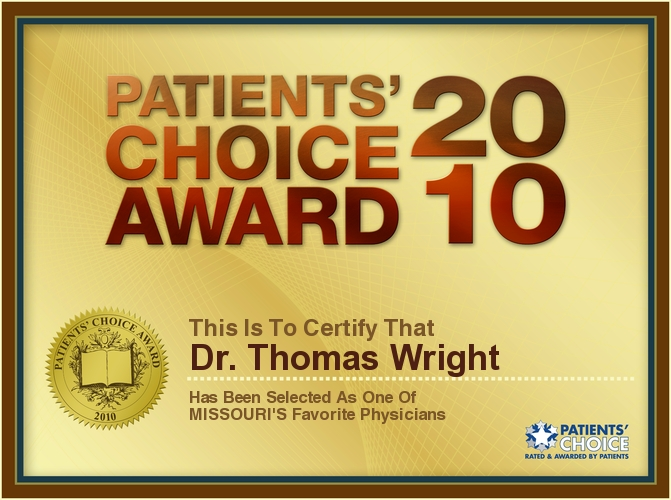Articles and News About Our Vein Center, Staff, and Events
See Dr. Wright on KSDK’s Health Center!
Part 1 of 5
Treating Varicose Veins: an Overlooked Cure for RLS
July 6, 2011 – O’Fallon, MO Community News — The cause of Restless Leg Syndrome (RLS) is still largely unknown, but it appears to have multiple contributing factors. Symptoms of RLS include: abnormal sensations of creepiness which are only relieved by moving the legs, irresistible urges to move the legs, persistent leg movements during sleep, sleep difficulty, tingling, burning, aching, and numbness. Vein problems such as varicose veins and other related conditions of venous insufficiency can also cause very similar symptoms. Recent medical research shows that 22 percent of patients with RLS also have venous insufficiency.
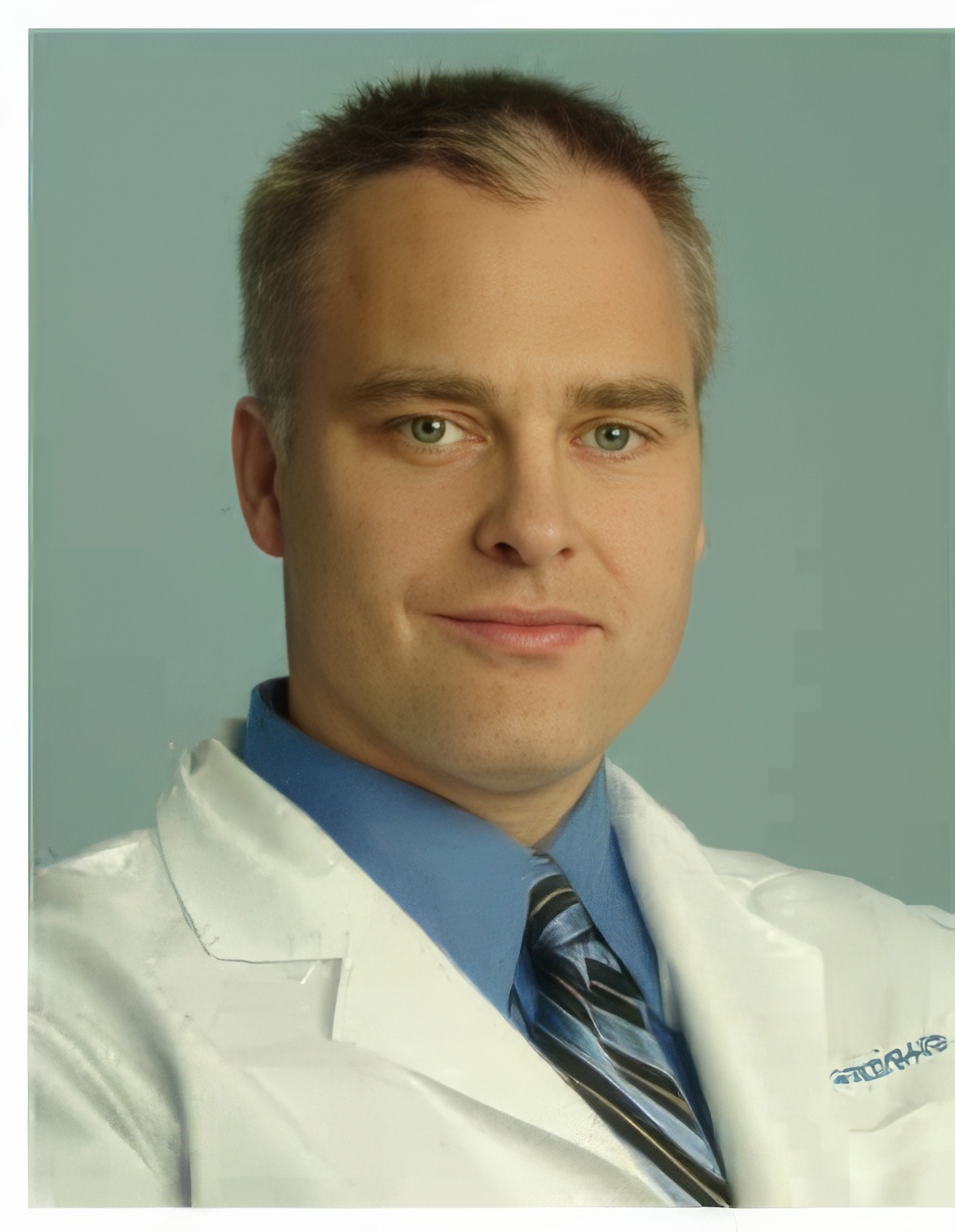
Most RLS is treated with medications that work on dopamine receptors such as Mirapex. Approximately 80 percent of patients have long-lasting relief of symptoms by taking medication every day such as Mirapex or similar medications. However, a small percentage has worsening of their symptoms. There can be other side effects related to the medication such as: blood pressure dropping upon standing, drowsiness, hallucinations, voluntary movement difficulties, double vision, and compulsive behaviors. Most patients would much rather have a single intervention that could relieve their symptoms for the rest of their lives.
Venous insufficiency, which is caused by backflow in the veins in the legs, is also a common cause of restlessness in the legs. Vein problems happen in more than 25 percent of the population. Symptoms such as swelling, tenderness, restlessness, and fatigue in the legs are often caused by vein disease. Many people with these symptoms are unaware they are caused by venous circulation problems. Venous insufficiency can be well treated with a laser to close the backward flowing veins. New medical research has shown that the treatment of venous insufficiency can cure the symptoms of RLS. In fact, in patients with RLS and venous insufficiency, 98 percent had relief of their symptoms of RLS by treating their venous insufficiency, and in 80 percent of patients, the relief was long term. In light of this new information, it makes sense for anyone who has symptoms of restlessness in their legs to be evaluated for venous insufficiency with a simple ultrasound test. If found the treatment of venous insufficiency has the best chance of complete relief of symptoms.
Interview requests and photos upon request please contact twrightmd2004@gmail.com or (636) 614-1665.
THOMAS WRIGHT, M.D., FACP,
Laser Lipo & Vein Center

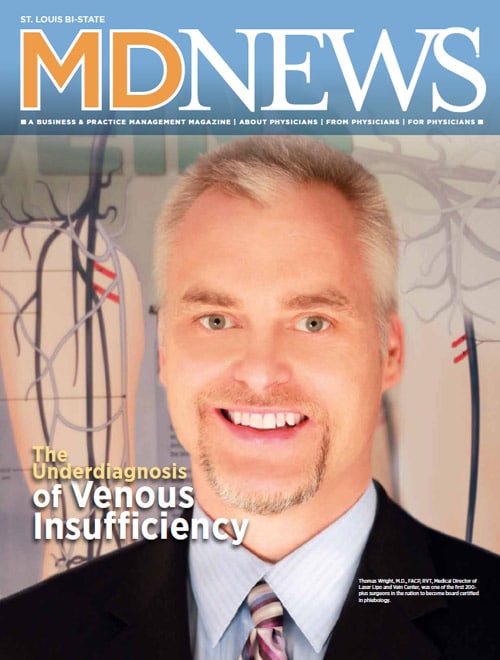
VENOUS INSUFFICIENCY IS the underlying problem that leads to varicose veins and much more. It occurs when faulty valves allow the blood in the veins to flow backwards and pool in the lower half of the body. The increased pressure from the pooled blood leads to additional veins becoming elongated, dilated, and gnarled (or varicose). In turn, these veins fail, leading to greater compromise of proper blood flow back to the heart. Under the force of gravity, the increasing pool of uncirculating venous blood leads to venous hypertension. Venous hypertension leads to inflammation and congestion in the tissue of the legs and is responsible for the symptoms of venous insufficiency, which can include edema, pain, aching skin discoloration, leg cramping, leg fatigue, and restlessness.
“Untreated venous issues can lead to a multitude of serious health problems, including variceal bleeding, venous ulcers, and blood clots, also known as deep venous thrombosis,” says Thomas Wright, M.D., FACP, RVT, Medical Director of Laser Lipo & Vein Center in St. Louis, MO.
“It’s important to dispel the myth that venous insufficiency is just a cosmetic issue. Leaving venous issues untreated can eventually lead to much larger problems.”
Venous insufficiency can be the underlying cause for a plethora of other conditions, including lower extremity cellulitis, restless legs syndrome, and leg cramps. According to Dr. Wright, when patients present with venous insufficiency symptoms, physicians often only check some of the obvious explanations and do not delve deeper to look for the possibility of venous reflux as an underlying cause.
For example, patients with venous insufficiency may experience leg cramps. When patients report this symptom, physicians often check potassium and calcium levels, but they seldom refer patients for a venous Doppler exam, even if the patients’ symptoms are worse after standing if they have physical signs of venous insufficiency, such as spider veins or skin changes. “There’s a large percentage of people walking around with venous problems who aren’t getting the evaluation or treatment they need,” says Dr. Wright
Venous Insufficiency, Venous Stasis Dermatitis & Cellulitis
Patients with venous insufficiency often develop a rash on the legs called stasis dermatitis. The increased venous pressure in the legs is transmitted to the capillaries. The pressure leads to the release of red blood cells and other inflammatory substances that produce a reddish discoloration of the skin. This rash responds best to lubrication or a mild steroid cream and compression stockings or wraps to counterbalance venous hypertension. Ultimately, the best treatment is the correction of the underlying cause of venous insufficiency.
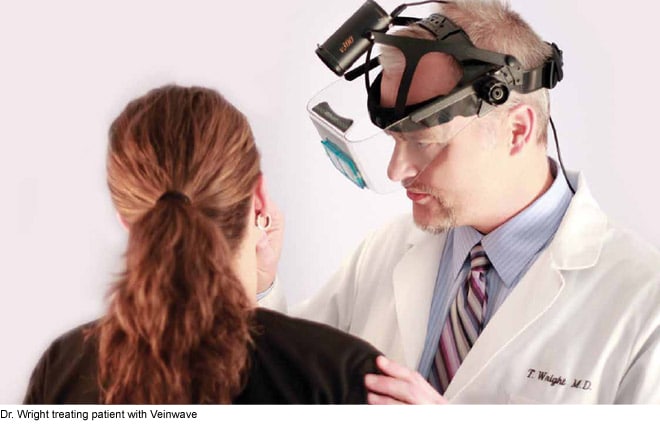
Additionally, because of the underlying inflammation in the skin, patients with venous insufficiency are also prone to developing cellulitis. Cellulitis is a potentially serious bacterial skin infection – most commonly occurring in the skin on the lower legs – that can affect both the skin’s surface and its underlying tissue. It is often difficult to know for sure whether the reddened, tender and swollen leg is caused by venous insufficiency alone or if there is a bacterial infection as well.
Antibiotics should be used to treat the cellulitis; however, if the underlying cause is venous insufficiency, cellulitis will likely return if the root cause is not treated.
Meet the Doctor
THOMAS WRIGHT, M.D., FACP, Medical Director of Laser Lipo & Vein Center in St. Louis, MO, was one of the first 200-plus surgeons in the nation to become board certified in phlebology by the American Board of Phlebology. Dr. Wright attended Duke University for his undergraduate degree and earned his medical degree from the University of Missouri in Columbia, MO. Dr. Wright completed his residency at the University of Alabama at Birmingham.
His professional affiliations include the American College of Phlebology, the American Medical Association, the American Society of Laser Medicine and Surgery, the Missouri State Medical Association, the American Academy of Cosmetic Surgery and the American Registry for Diagnostic Medical Sonography.
Dr. Wright has authored and presented several scientific papers on surgical techniques in the treatment of venous insufficiency.
Venous Insufficiency and Lower-Extremity Edema
Venous hypertension is the most common cause of tissue edema in the lower extremity, and the most common cause of venous hypertension is venous reflux. Congestive heart failure is a distant second. The edema in the legs caused by venous insufficiency is often worse in one leg and often involves less fluid accumulation than the edema caused by heart failure. However, venous hypertension also affects the lymphatic drainage and can lead to massive lower-leg edema (veno-lymphedema). Despite the significantly greater prevalence of primary venous insufficiency, it is often not considered even after cardiac, heptic, and renal problems have been ruled out as the cause of the edema.
Before committing a patient with restless legs syndrome to possible life-long medication with potential side effects, venous insufficiency should be checked as a possible cause, as correction of the vein reflux provides long-term and likely permanent relief.
Venous Insufficiency and Restless Legs Syndrome
Restless legs syndrome is believed to be associated with a number of factors, including iron deficiency, peripheral neuropathy, Parkinson’s disease, and other neurological disorders. Recent medical research reported in the journal Dermatologic Surgery showed that 22% of patients with restless legs syndrome also have venous insufficiency as revealed through the Doppler examination. “Symptoms of restless legs syndrome include burning and tingling sensations and the uncontrollable urge to move the legs, which is worse at night when laying down and is relieved by movement or walking,” says Dr. Wright. “There is a great overlap in the symptoms of vein disease and restless legs syndrome. As the two conditions have similar presentations, it’s important to consider both the vascular and neurological concerns.”
Studies show that the treatment of venous insufficiency can relieve symptoms of restless leg syndrome. According to a study in the journal Phlebology, in patients with restless leg syndrome and venous insufficiency, 98% of patients experienced relief from restless legs syndrome symptoms by treating their venous insufficiency, and 80% had long-term relief.
Before committing a patient with restless legs syndrome to possible life-long medication with potential side effects, venous insufficiency should be checked as a possible cause, as correction of the vein reflux provides long-term and likely permanent relief.
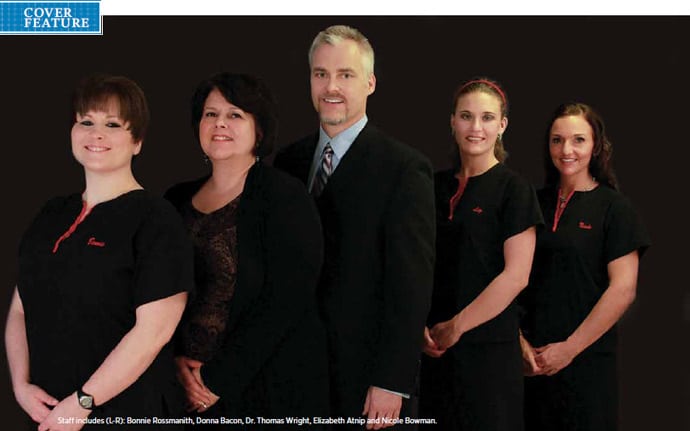
Not Just a Cosmetic Concern
VENOUS INSUFFICIENCY AND the associated varicose veins are not just a cosmetic concern; they can result in physical symptoms. Signs of venous insufficiency include: varicose veins; leg swelling; skin changes, such as redness or a brownish staining and a whitish loss of skin pigment; and ulcers on the legs. Symptoms of venous insufficiency include: leg and pelvic pain or cramping; a feeling of throbbing, aching or heaviness in the legs; leg fatigue; and restlessness.
Most insurance companies cover symptomatic venous disease, meaning patients don’t have to live with the discomfort associated with venous disorders. Laser Lipo & Vein Center in St. Louis accepts all major insurance coverage.
Making a Diagnosis
Correctly diagnosing vein disease involves a review of the patient’s history of symptoms, physical examination, and a duplex ultrasound of the veins. The duplex ultrasound exam can help identify the presence of reflux and its location, as well as determine the patency of the deep and superficial venous systems. The leg is examined from the saphenofemoral junction down to the ankle.
The key to a successful ultrasound is that the patient is standing during the exam to accurately determine blood flow concerns. Venous insufficiency can be easily missed in the event that the ultrasound is performed while the patient is lying down.
“Often, when you send a patient for an ultrasound evaluation for venous disease, the technician mistakenly has the patient lie down. This occurs because many technicians are trained to look for deep vein disease; however, this positioning will result in an inadequate exam, and superficial venous insufficiency won’t be diagnosed,” says Dr. Wright. “It’s Important to send patients to a specialized vein venter, as their sonographers are trained to detect venous insufficiency and can diagnose it with more accuracy.”
Once venous insufficiency has been correctly identified, a variety of conservative treatment methods may be utilized as an initial treatment approach. These may include elevating the legs when possible, avoiding long periods of sitting or standing, wearing compression stockings, and being active. if these methods are not successful, a variety of surgical or procedural options may be recommended.
An Up-and-coming Specialty
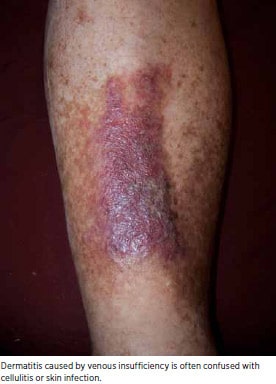
PHLEBOLOGY IS A relatively new medical specialty that focuses on the study and treatment of venous diseases and disorders. As more than 80 million Americans currently suffer from venous disorders, phlebology now offers the opportunity for patients to see a dedicated specialist who is up to date on the latest diagnostic techniques and treatment methods. Phlebologists address a variety of venous concerns, including varicose veins, spider veins, deep vein thrombosis, pulmonary embolism, and venous insufficiency.
A Brief History
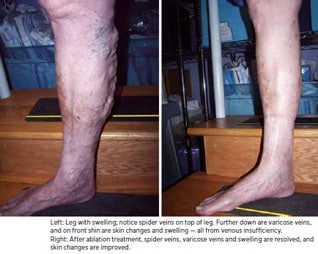
The American College of Phlebology was first founded in 1986 – then named the North American Society of Phlebology – and has grown during the last 20 years to begin to fulfill its mission of advancing vein care and supporting new clinical research in the field of venous disease. This research has resulted in new pharmacological advances and minimally invasive surgical techniques for the treatment of venous disorders.
After 20 years of dedicated work, the American College of Phlebology succeeded in its goal of officially establishing phlebology in the medical community – the American Medical Association recognized phlebology as its own self-designated medical specialty in 2005.
The first American College of Phlebology fellowship program began offering 12 months of phlebology postgraduate training in 2007, and physicians were first given the opportunity to take the American Board of Phlebology certification exam in May of 2008. The American College of Phlebology is now working to establish a registry-level phlebology ultrasound examination for ultrasound specialists. The American College of Phlebology publishes its own official journal, Phlebology.
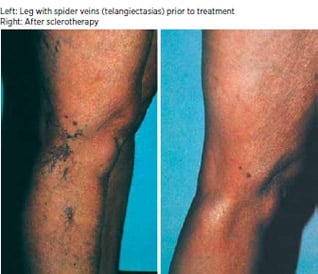
Treatment in the Laser Era
Vein stripping or vein ligation of the saphenous vein was once the primary method for the treatment of varicose veins and its underlying cause. It involves tying off and stripping out the damaged vein. Vein stripping usually requires a recovery period of six weeks or more and can involve significant postoperative pain.
Today, endovenous laser ablation (ELA) offers a minimally invasive alternative to the surgical stripping of veins.
“ELA has an impressive 98% successful long-term saphenous closure and very low recurrence rate,” says Dr. Wright. “This compares favorably with vein stripping, which has a recurrence rate of up to 40%.” The non-surgical procedure inserts a small probe with a laser fiber through a freckle-sized nick in the skin. Ultrasound guidance helps direct the probe to the damaged vein. Pulses of laser light are delivered into the vein, causing the internal vein wall to collapse and seal shut. This 45-minute, minimally invasive treatment can be performed in a single office visit with local anesthesia.
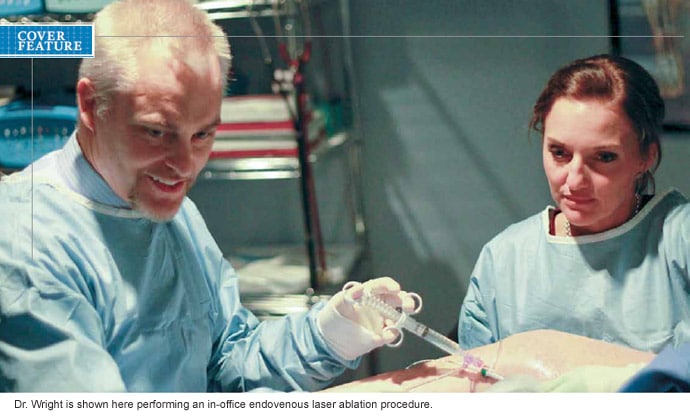
Unlike vein stripping, there is no scarring or long recovery period with ELA. The procedure is about as invasive as having a peripheral IV,” says Dr. Wright. “Patients are up and walking the same day and can resume normal activities within a day or two.”
Other treatment options for venous disorders include:
+ Sclerotherapy is a treatment that uses a tiny needle to inject a solution called sclerosant into the veins. This solution irritates the lining of the veins and causes them to close. The body then absorbs the treated vein. Sclerotherapy can be used to treat both varicose and spider veins that are often seen on the surface of the legs. For Deeper branches of the vein that may not be seen on the surface, an ultrasound-guided option is also available. Multiple treatments are usually required to permanently close a vein.
+ Veinwave is a new device approved by the U.S. Food and Drug Administration just this year. It has been used in Europe for more than eight years. While sclerotherapy is successful in the treatment of most large and small veins, it cannot treat the fine, reddish veins on the knees, ankles, and face. The new Veinwave device sends radio wave energy in quick pulses to the affected area, causing the vein walls to collapse. Unlike similar devices available before, Veinwave is virtually painless and has no risk of burning the skin. “This device was developed as a way to treat the tiny veins on the surface of the skin that cannot be treated with sclerotherapy,” says Dr. Wright. “The other options of treating these tiny veins – laser and light treatments – pose the risk of burning and scarring. “ELA remains the quickest, most effective procedure for venous insufficiency, and it’s changing the face of treatment,” says Dr. Wright. “ELA has lowered the bar for patients, because it is so much less invasive and promotes rapid recovery, making treatment for venous insufficiency a possibility for a greater range of people. Now, patients don’t have to wait until they are miserable from the symptoms or have developed complications to be treated.”
Referring Your Patients
For patients living with the pain and discomfort associated with venous insufficiency, help is available. Laser Lipo & Vein Center in St. Louis offers comprehensive care for venous disease, from diagnosis to treatment.
For more information, visit www.laserlipoandveins.com. To refer a patient, call (636) 397-4012.
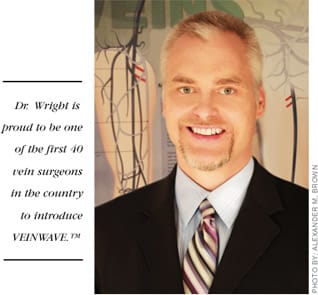
What is the Laser, Lipo & Vein Center?
The laser, Lipo & Vein Center is a medical practice that incorporates advanced and innovative medical technology into a relaxed, comfortable atmosphere. Led by Dr. Thomas Wright, the Laser, Lipo & Vein Center is dedicated to educating and treating patients who have varicose, spider veins, and a host of other veins problems.
As one of the very few full-time vein centers in the area, Laser, Lipo & Vein Center has established itself as a metropolitan St. Louis’ premier medical office for the treatment of varicose and spider veins.
What Can We Do For You?
Vein problems are not just a cosmetic problem. There are plenty of painful, sometimes debilitating symptoms associated with vein disease, which is more common than many people think. Anywhere from 25 to 40 percent of Americans, including men, experience some form of vein disease.
Treatment at the Laser, Lipo, & Vein Center can prevent feelings of pain, discomfort, heaviness, cramping, burning, tingling, and swelling of legs, all of which are common symptoms of vein disease. What many people don’t know is that insurance plans will cover the evaluation of symptomatic vein problems.
What’s New At The Center
Dr. Wright is proud to be one of the first 40 vein surgeons in the country to introduce VEINWAVETM. VEINWAVE is a device that uses pulsed radio waves to treat small, unsightly spider and thread veins on the face and body. These veins are typically untreatable with traditional sclerotherapy, but VEINWAVE allows Dr. Wright to treat even hard-to-reach veins quickly with virtually no pain at all. The treatment takes less than 15 minutes to perform and involves no downtime. Any adult man or woman in good health who has thin spider veins or the tangled, thread-like veins known as telangiectasia is a good candidate.
The Laser, Lipo & Vein Center Performs The Following Procedures:
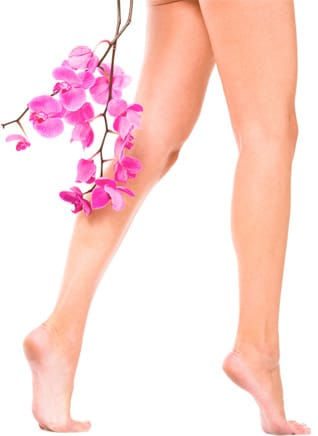
- Comprehensive evaluation of vein problems and vein disease.
- Endovenous laser ablation to treat varicose veins.
- VEINWAVE for spider veins on the face
- Sclerotherapy
What is the Laser, Lipo & Vein Center?
The laser, Lipo & Vein Center is a medical practice that incorporates advanced and innovative medical technology into a relaxed, comfortable atmosphere. Led by Dr. Thomas Wright, the Laser, Lipo & Vein Center is dedicated to educating and treating patients who have varicose, spider veins, and a host of other veins problems. As one of the very few full-time vein centers in the area, Laser, Lipo & Vein Center has established itself as a metropolitan St. Louis’ premier medical office for the treatment of varicose and spider veins.
What Can We Do For You?
Vein problems are not just a cosmetic problem. There are plenty of painful, sometimes debilitating symptoms associated with vein disease, which is more common than many people think. Anywhere from 25 to 40 percent of Americans, including men, experience some form of vein disease.
Treatment at the Laser, Lipo, & Vein Center can prevent feelings of pain, discomfort, heaviness, cramping, burning, tingling, and swelling of legs, all of which are common symptoms of vein disease. What many people don’t know is that insurance plans will cover the evaluation of symptomatic vein problems.
What’s New At The Center
Dr. Wright is proud to be one of the first 40 vein surgeons in the country to introduce VEINWAVETM. VEINWAVE is a device that uses pulsed radio waves to treat small, unsightly spider and thread veins on the face and body. These veins are typically untreatable with traditional sclerotherapy, but VEINWAVE allows Dr. Wright to treat even hard-to-reach veins
quickly with virtually no pain at all. The treatment takes less than 15 minutes to perform and involves no downtime. Any adult man or woman in good health who has thin spider veins or the tangled, thread-like veins known as telangiectasia is a good candidate.
The Laser, Lipo & Vein Center Performs The Following Procedures:
- A comprehensive evaluation of vein problems and vein disease.
- Endovenous laser ablation to treat varicose veins.
- VEINWAVE for spider veins on the face
- Sclerotherapy
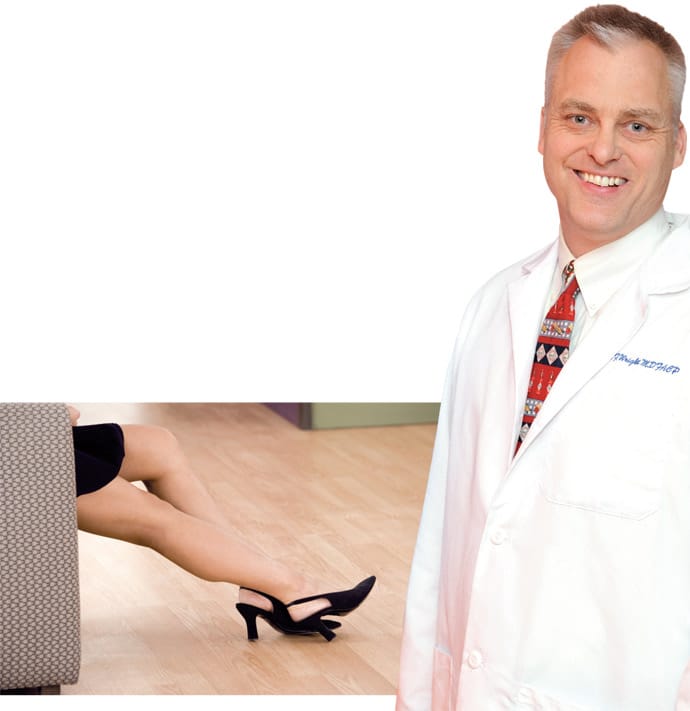
Millions of men and women suffer from spider veins and telangiectasia – those unsightly clusters of red, blue, or purple veins that spider-web across the cheeks, thighs, calves, ankles, and knees. In fact, for Western populations like the US, it’s been estimated that 25-30% of women and 10-20% of men suffer from this unsightly condition.
Finally, a revolutionary new technology is available that will enable you to say goodbye to those unattractive facial and hand veins and the tiny spider and thread veins that appear on the face and body.
In July 2009 the FDA approved a medical device that for the first time allows a few vein specialists to treat those small veins that can’t be treated with sclerotherapy. Dr. Thomas Wright MD RVT of Laser Lipo and Vein Center is now one of the first 40 surgeons in the US to offer this unique treatment and introduce this new technology for his patients.
Although the Veinwave™ has been available for over 8 years in Europe where it is enjoyed by over 1000 physicians, the FDA only recently cleared the revolutionary Veinwave device for eliminating spider veins of the lower extremities and telangiectasia. Designed primarily for vein surgeons, Veinwave uses an innovative process in which radio wave energy is quickly pulsed to the affected area which causes the vein walls to collapse. The veins disappear before your eyes. It is very safe, effective, and permanent. “Because Veinwave works using radio waves that are pulsed directly to the desired area, the treatment is quick and pain-free,” said Dr. Wright.
“The device was developed by a vascular surgeon as a way to treat very tiny veins on the surface of the skin that cannot be treated with sclerotherapy. The other options for treating these tiny veins, laser and light treatments, risk burning and scarring the area around the vessel, which does not occur with the Veinwave,” he added.
Until now, lasers and other light-based devices have been used to treat these veins, but with limited success. Unlike lasers, the Veinwave involves only slight discomfort, so there is no need for anesthetic creams or pain medications. Also, the Veinwave doesn’t carry a risk of long-term scarring. The treatment takes only a few minutes to complete. “How is this possible? Veinwave’s ultra-fine, insulated probe permits a highly targeted treatment that doesn’t irritate the surrounding skin. Therefore, within minutes after the session, patients can resume their everyday activities without bandages as if it never happened.”
Sclerotherapy provides successful treatment on the larger leg veins. Sclerotherapy is a microinjection procedure. It requires no pain medication during or after the procedure. Abnormal veins are destroyed by injecting a solution called a sclerosant, which irritates the vein wall. “It is not simply injecting the sclerosant, but paying attention to the volume, concentration, and “exposure time” that makes the difference between success and failure.
“However, sclerotherapy fails to be effective on the fine veins of the knee and ankle and is rarely used on the face. As a combination therapy, Veinwave is the perfect compliment to sclerotherapy,” explained Dr. Wright.
Veinwave can also be used to treat veins in difficult-to-treat locations, including the face, ankles, and knees. The treatment takes less than 15 minutes to perform and involves no downtime. According to Dr. Wright, any adult man or woman in good general health who has thin spider veins, or tangled, thread-like veins known as telangiectasia, is a good candidate. Also, anyone who is looking for a quick procedure and wants to avoid the possibility of bruising or scarring should consider the Veinwave treatment.
Dr. Wright is a board-certified vein specialist, who researches and implements innovative technologies as the medical director of Laser Lipo and Vein Center in the St Louis metro area. Laser Lipo and Vein Center is a medical practice that incorporates advanced and innovative medical technology into a relaxed and comfortable atmosphere.
“We treat all the manifestations of vein disease, an often under-appreciated disease. Vein disease treatment starts with a comprehensive evaluation by ultrasound of the venous circulation in your lower extremities. If underlying venous insufficiency (backflow) is found in the main veins of the legs, we treat that with Endovenous Laser Ablation (EVLT). If venous reflux of the saphenous vein is found, the vein is ablated using a procedure called Endovenous Laser Treatment (EVLT).
Endovenous Laser Treatment is a treatment alternative to surgical stripping of the greater saphenous vein. A small laser fiber is inserted, usually through a needle stick in the skin, into the damaged vein. Pulses of laser light are delivered inside the vein, which causes the vein to collapse and seal shut. The procedure is done in-office under local anesthesia. Following the procedure, a bandage or compression hose is placed on the treated leg. We also treat the smaller veins with a combination of Sclerotherapy and the new Veinwave techniques,” expanded Dr. Wright.
According to Dr. Wright, his practice is the only practice in the area that accepts and is credentialed with all of the insurance carriers in the region, which often makes them the most affordable provider of these services. In addition, Laser Lipo performs non-invasive and minimally invasive cosmetic procedures that are determined by you and Dr. Wright during your personal consultation. “We achieve dramatic results without drastic measures by offering Lipodissolve, Botox, Restylane, Radiesse, Perlane, Laser Hair Removal, and Laser Skin Rejuvenation. Call and set up a consultation with me and let us see if Veinwave is right for you, ” Dr. Wright added.
For more information about venous health issues or to set up an appointment with Dr. Wright, please call his office at 636-387-4094 or visit the Laser Lipo and Vein Center located at 7030 Mexico Road, Suite A in St. Peters. Read the Health section of the Focus News for monthly educational and research articles regarding vein disease and its treatment. You can also visit laserlipoandveins3.reachlocal.net for more information.
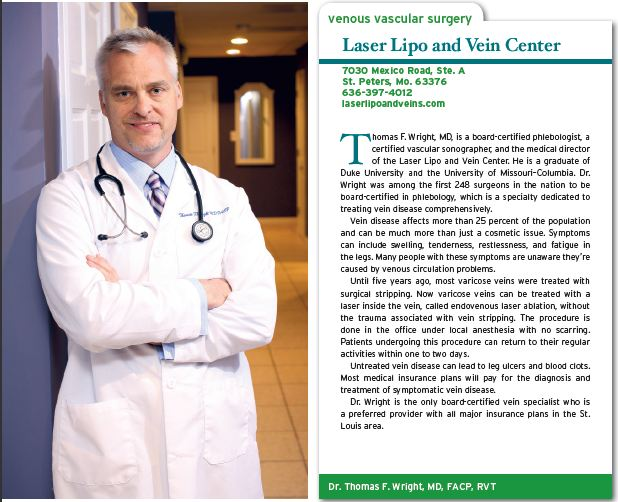
Thomas F. Wright, MD, is a board-certified phlebologist, a certified vascular sonographer, and the medical director of the Laser Lipo and Vein Center. He is a graduate of Duke University and the University of Missouri–Columbia. Dr. Wright was among the first 248 surgeons in the nation to be board-certified in phlebology, which is a specialty dedicated to treating vein disease comprehensively.
Vein disease affects more than 25 percent of the population and can be much more than just a cosmetic issue. Symptoms can include swelling, tenderness, restlessness, and fatigue in the legs. Many people with these symptoms are unaware they’re caused by venous circulation problems. Until five years ago, most varicose veins were treated with surgical stripping. Now varicose veins can be treated with a laser inside the vein, called endovenous laser ablation, without the trauma associated with vein stripping. The procedure is done in the office under local anesthesia with no scarring. Patients undergoing this procedure can return to their regular activities within one to two days. Untreated vein disease can lead to leg ulcers and blood clots. Most medical insurance plans will pay for the diagnosis and treatment of symptomatic vein disease. Dr. Wright is the only board-certified vein specialist who is a preferred provider with all major insurance plans in the St. Louis area.
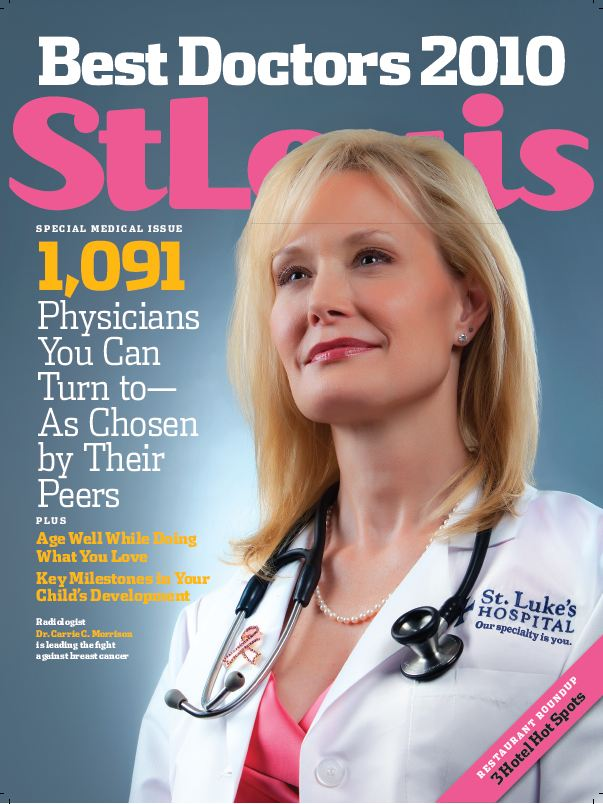
Laser Vein Center opens in OFallon, MO
The Laser Vein Center is a leading St. Louis vein center under the direction of board-certified vein specialist Dr. Thomas Wright. We offer a wide range of minimally invasive and effective treatments to help you get rid of spider veins and varicose veins with as little downtime as possible. At the Laser Vein Center, we understand that problem veins are more than just a cosmetic concern. Varicose veins are often a symptom of chronic vein disease, which may lead to venous ulcers if left untreated.
Not long ago, getting rid of varicose veins or spider veins required invasive vein surgery, also known as “vein stripping.” Vein surgery was performed in a hospital, usually involved a lengthy and often uncomfortable recovery period, and sometimes resulted in noticeable scars.
You’ll be glad to know that there are now alternatives to invasive vein surgery. Dr. Wright has been a leader in bringing new and effective vein treatments, including the new Veinwave™ technology, to greater St. Louis, giving his patients a number of minimally invasive vein treatment options. As a result, there has never been a better time to explore treatment options to get rid of varicose veins.
The vein treatments offered at our new OFallon location treatment center include duplex ultrasound, Endovenous Laser Treatment (EVLT) sclerotherapy, ultrasound-guided sclerotherapy, Veinwave, and hand vein treatment. The minimally-invasive vein services we offer can be performed in the comfort and privacy of our clinic, require little or no anesthesia and are usually completed in less than an hour. They offer excellent results and quick recovery times.
Dr. Thomas Wright Recently Chosen As One of Missouri’s Favorite Physicians!
